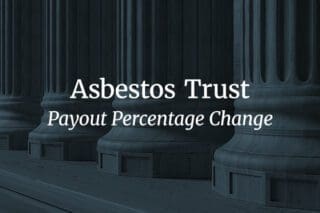A BC Supreme Court ruling rejects health and safety claims regarding regulations that were “too complicated” for asbestos workers to follow, resulting in outrage at the Canadian Conference of Asbestos Workers (CCAW).
“The health and safety of Canadian workers is never too complicated to protect,” said Western Canadian Vice President of the International Association of Heat and Frost Insulators and Allied Workers, Vince Engel. “The harmful effects of exposure to asbestos are undeniable. We are outraged that the court has decided health and safety laws are simply too complex to be enforced.”
BC Supreme Court Justice George Macintosh dismissed a contempt of court application against Seattle Environmental asbestos removal contractors Mike and Shawn Singh. The contractors’ testimonials showed evidence that safety laws were breached, so WorkSafeBC filed the application after repeated warnings were ignored.
In fact, one of those warnings cited a 2013 BC Supreme Court order to follow safe asbestos removal regulations. For this ruling, Justice Macintosh stated the asbestos laws and regulations were “voluminous and complex” like “looking through the Income Tax Act.”
Canada has a longstanding history involving asbestos that has continued into the present. The country was once the world’s top producer of asbestos. About five years ago, nearly 100,000 tons of the toxic substance was still produced in Quebec.
There is a town called Asbestos in Quebec where the country’s largest asbestos mine and the town’s largest employer, the Jeffery Mine, is located. Although Canada closed its last mine in late 2011, in 2014 it imported $6 million worth of asbestos products, up from $4.9 million the previous year.
Asbestos exposure is the number one reason for work-related deaths in Canada. Nearly 5,000 individuals that passed had approved death claims from asbestos since 1996. Plus, 368 asbestos-related deaths occurred in 2013, exceeding the number of highway accidents, fires, and chemical exposures combined.
Hopefully, WorkSafeBC can appeal the ruling with the CCAW’s backing as it leads a dangerous example of not enforcing contractors to abide by safety laws. The CCAW is made up of nine local unions in Canada affiliated with the International Association of Heat and Frost Insulators and Allied Workers.
“This decision sends a dangerous message to contractors that safety laws can be ignored if they seem too complicated to follow,” said Eastern Canadian Vice President of the International Association of Heat and Frost Insulators and Allied Workers, Fred Clare. “These health and safety laws are supposed to protect the lives of asbestos workers in Canada. But what good are these rules if they aren’t enforced and there are no penalties for breaking the law?”
Unfortunately, Canada has actually increased its use of asbestos and continues to utilize the dangerous chemical, especially in the form of automobile brake lining, brake pads and construction materials.





